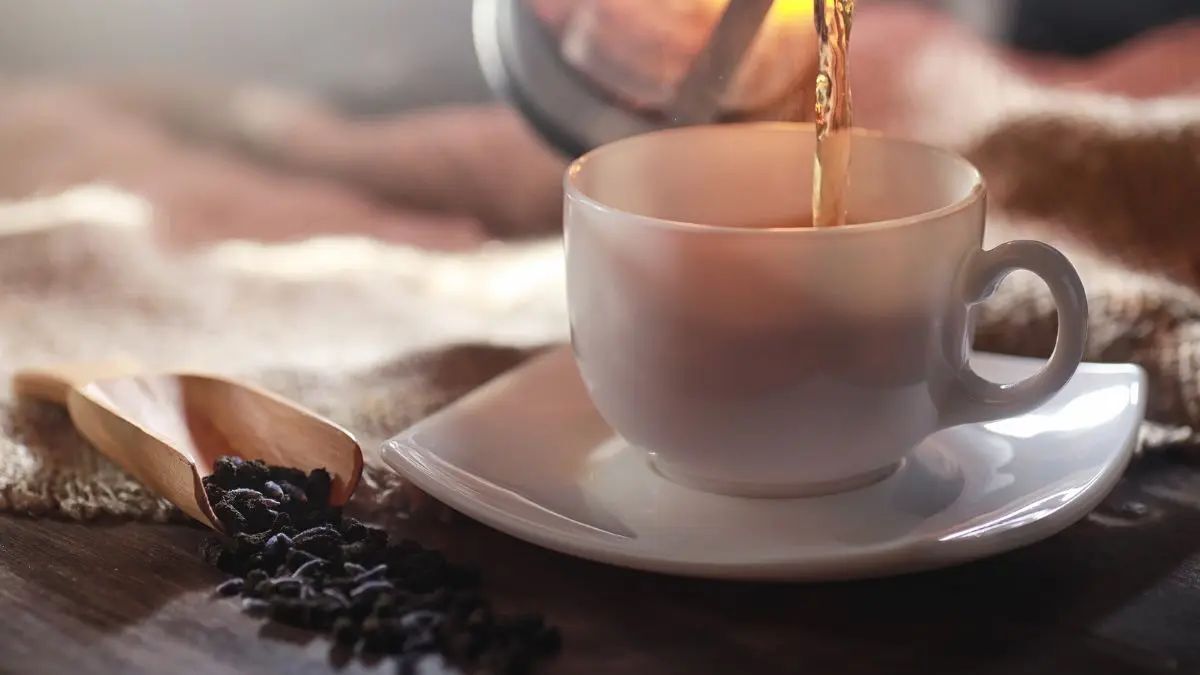
Brewing tea is an art that transforms simple ingredients into a soothing, flavorful experience. To do it properly, it’s not just about dunking a tea bag in hot water—it involves mastering a few key techniques. By using the right water, understanding ideal brewing temperatures, and timing your steeping just right, you can unlock the full potential of your favorite tea. Whether you’re a fan of loose leaves or the convenience of tea bags, this guide will help you brew a flawless cup, every single time.
The 4 Golden Rules for Brewing Tea
Before you brew, mastering these four fundamentals will ensure a delicious outcome, no matter what type of tea you choose.
- Use High-Quality Water: Tea is 99% water, so its quality is crucial. Start with fresh, cold, filtered water or spring water. Avoid using distilled water, as its lack of minerals can result in a flat-tasting brew.
- Mind the Temperature: Different teas require different water temperatures to extract their best flavors without becoming bitter. Boiling water (212°F / 100°C) is perfect for black and herbal teas, but it will scorch delicate green and white teas.
- Control the Steeping Time: Steeping tea for too long is the most common cause of bitterness. Each tea type has an ideal steeping window to achieve a balanced and pleasant flavor.
- Give Leaves Room to Expand: For the most flavorful brew, tea leaves need space to unfurl and release their essential oils. This is why many connoisseurs prefer loose leaf tea over tightly packed tea bags.
Tea Brewing Times & Temperatures at a Glance
Use this chart as your guide to achieving the perfect infusion. Heating water in a kettle with temperature control is ideal, but you can also boil water and let it cool for a minute or two to reach the right temperature for more delicate teas.
| Tea Type | Water Temperature | Steeping Time |
|---|---|---|
| Green Tea | 160–180°F (70–80°C) | 1–3 minutes |
| White Tea | 175–185°F (80–85°C) | 2–4 minutes |
| Oolong Tea | 185–205°F (85–96°C) | 3–5 minutes |
| Black Tea | 200–212°F (93–100°C) | 3–5 minutes |
| Herbal Tea | 200–212°F (93–100°C) | 5–7 minutes |
How to Brew Tea: Step-by-Step Methods
How to Brew Loose Leaf Tea
Loose leaf tea offers superior flavor because the whole leaves have more room to expand. Use an infuser basket, tea ball, or tea filters for easy brewing.
- Measure Your Leaves: Start with the general rule of 1 heaping teaspoon of tea per 8 ounces of water. Add a little more for bulky, whole-leaf teas like some oolongs or white teas.
- Heat Your Water: Heat fresh, cold water to the correct temperature for your tea type using the chart above.
- Steep for the Right Time: Pour the hot water over the tea leaves in your teapot or mug. Let it steep according to the recommended time. Stirring once during this period can help with infusion.
- Remove the Leaves: Promptly remove the tea infuser or strain the tea into your cup to prevent it from becoming bitter. High-quality leaves can often be re-steeped for a second or third cup!
How to Brew with Tea Bags
The principles are the same, but the process is even simpler.
- For a single cup: Use one tea bag per cup. Pour water at the correct temperature over the bag and steep. Dip the bag a few times to agitate the water.
- For a pot of tea: Use 2-3 tea bags for a standard 32oz. pot. Follow the steeping instructions and remove the bags promptly once done. Do not reuse standard tea bags.
How to Make Classic Iced Tea
Black tea is the classic choice for a Southern-style iced tea, but any tea will work.
- Brew It Strong: Use double the amount of tea leaves or tea bags you would normally use for hot tea. This creates a strong concentrate that won't taste diluted once ice is added.
- Cool and Dilute: Let the strong tea concentrate cool down slightly at room temperature. Rushing this step by adding ice immediately can cause the tea to become cloudy. Once cooled, dilute with cool water to your desired strength.
- Serve Over Ice: Pour your diluted tea into glasses filled with ice and serve immediately.
Pro Tip: If your iced tea turns cloudy, it's usually due to hard water or cooling the tea too quickly. Adding a splash of boiling water can often clear it up.
Frequently Asked Questions About Brewing Tea
Why does my tea taste bitter?
Bitterness is almost always caused by one of two things: steeping the tea for too long or using water that is too hot for the type of tea (especially green and white teas). Try reducing your steep time or lowering your water temperature.
Should I use tap, filtered, or spring water for tea?
For the best, purest flavor, filtered or spring water is ideal. Tap water can sometimes contain minerals or chlorine that interfere with the delicate flavors of the tea.
Can I reuse tea leaves?
Yes! High-quality loose leaf teas (especially green, white, and oolong) are designed to be steeped multiple times. Each infusion will reveal a slightly different layer of flavor. Standard paper tea bags, however, are not meant for reuse.
Is there a big difference between brewing loose tea and tea bags?
Generally, yes. Loose leaf tea provides a more complex and nuanced flavor because the leaves are higher quality and have more room to expand and infuse fully. Tea bags often contain smaller, broken pieces of tea ("dust" and "fannings") which can result in a harsher flavor.
